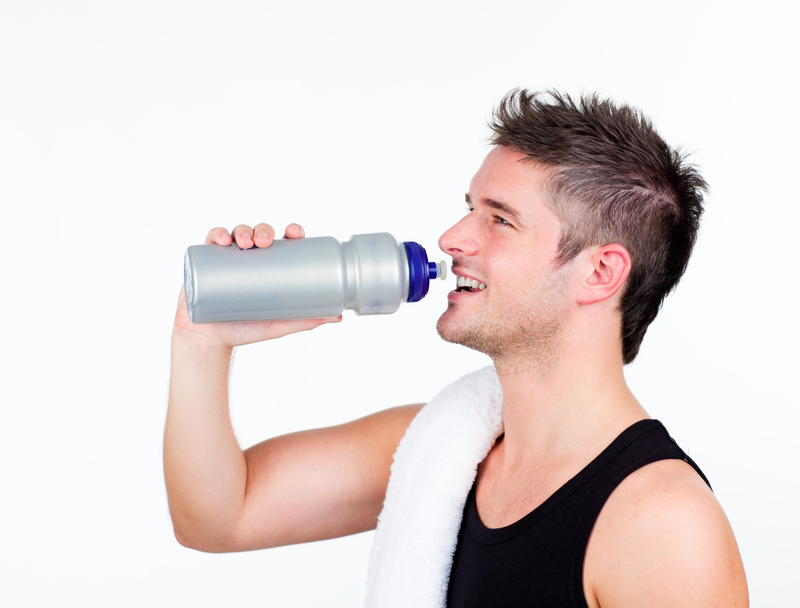Air You Can Trust: Elevating the Standards of Indoor Air Quality
Posted on 17/06/2025
Air You Can Trust: Elevating the Standards of Indoor Air Quality
Indoor air quality (IAQ) has become a paramount concern in homes, workplaces, and public environments as we spend an increasing amount of our lives indoors. With health, comfort, and productivity at stake, ensuring that the air you breathe within four walls is clean and safe has never been more important. This comprehensive guide will explore the importance of trustworthy indoor air, prominent pollutants, cutting-edge solutions, and actionable steps to elevate the standards of air quality in your life.
Why Indoor Air Quality Is Critical
The air inside buildings can be two to five times more polluted than the air outdoors. This alarming statistic arises due to limited ventilation, synthetic building materials, everyday activities, and modern furnishings that emit volatile organic compounds (VOCs). Poor indoor air quality can impact health, mood, and cognitive performance. Understanding the root causes and consequences of indoor air pollution is the first step toward improvement.
Impacts on Health and Well-Being
- Short-term effects: Headaches, dizziness, fatigue, coughing, eye/nose/throat irritation.
- Long-term impacts: Respiratory and cardiovascular diseases, allergies, asthma, and even certain cancers.
- Mental and cognitive influence: Research links poor indoor air to impaired concentration, mood disorders, and diminished productivity at work or school.
Common Sources of Indoor Air Contaminants
- Biological pollutants: Mold, bacteria, pet dander, dust mites, and pollen.
- Chemical pollutants: Tobacco smoke, cleaning agents, paints, adhesives, and pesticides.
- Particulate matter: Fine particles from cooking, wood stoves, or candles that can infiltrate lungs.
- Gaseous pollutants: Carbon monoxide, radon, formaldehyde, and nitrogen dioxide.

Elevating the Standards: What Makes Air You Can Trust?
Trustworthy indoor air is clean, healthy, and free from harmful contaminants. The standards for high-quality air continue to rise, fueled by new knowledge and technology. But what does it truly mean to have air you can trust in your environment?
Essential Principles of Quality Indoor Air
- Cleanliness: Removal or reduction of physical and chemical contaminants below recommended thresholds.
- Optimal Humidity: Maintaining relative humidity levels between 30-50% to prevent mold and biological growth.
- Ventilation: Consistent exchange of indoor and outdoor air to dilute and remove pollutants.
- Freshness: Absence of musty, chemical, or stale odors, contributing to comfort and well-being.
- Transparency: Ongoing monitoring and clear information about indoor air quality status.
Industry Standards and Guidelines for Indoor Air Quality
- World Health Organization (WHO): Provides recommended limits for major indoor air pollutants.
- ASHRAE (American Society of Heating, Refrigerating and Air-Conditioning Engineers): Sets ventilation and air filtration standards for various building types.
- LEED and WELL Certifications: Offer frameworks for green buildings prioritizing air quality, occupant comfort, and overall environmental health.
The New Frontier: Smart Indoor Air Quality Solutions
The rise of smart homes and IoT technology is revolutionizing how we monitor, understand, and improve indoor air quality. Today's solutions are more precise, proactive, and customizable than ever before.
Real-Time Air Quality Monitoring
Wireless sensors and advanced monitors track key indicators such as PM2.5, CO2, VOCs, humidity, and temperature, offering real-time insights via mobile apps or building management systems. This transparency allows immediate response when air quality dips, empowering users to take action or automate systems accordingly.
Advanced Air Purification Technologies
- HEPA Filters: Capable of removing 99.97% of particles as small as 0.3 microns, essential for capturing dust, allergens, and some bacteria.
- Activated Carbon: Adsorbs odors and gaseous pollutants, including VOCs and smoke.
- UV-C Light: Destroys viruses, bacteria, and mold spores, keeping systems and air spaces hygienic.
- Photocatalytic Oxidation (PCO): Breaks down chemical pollutants at the molecular level.
- Electrostatic and Ionic Purifiers: Use charged plates or ions to trap airborne contaminants.
Smart Ventilation and HVAC Systems
Modern ventilation systems integrate energy recovery ventilators (ERVs) or heat recovery ventilators (HRVs) that swap stale indoor air for filtered outdoor air while minimizing energy loss. Some systems dynamically adjust based on occupancy or pollutant levels, maintaining ideal air turnover rates for health and comfort.
Transforming Indoor Environments: How to Achieve Air You Can Trust
Elevating the standards of indoor air quality requires a holistic, proactive approach. Here's a comprehensive roadmap to ensure the air in your space meets--and exceeds--modern expectations:
1. Assess and Monitor Your Current Air Quality
- Consider investing in an indoor air quality monitor to track pollutants, humidity, and temperature.
- Identify periods or areas where readings spike and note potential activities (e.g., cooking, cleaning, heavy occupancy).
- Schedule professional air quality testing for a thorough assessment, especially in workplaces or high-risk settings.
2. Control and Eliminate Pollutant Sources
- Switch to low-VOC products (paints, finishes, cleaning agents) to reduce chemical exposure.
- Implement strict no-smoking policies indoors.
- Fix leaks and address moisture promptly to prevent mold growth.
- Keep pets clean and groomed to minimize dander and allergens.
- Opt for green furnishings and building materials whenever possible.
3. Enhance Ventilation and Airflow
- Regularly open windows and doors to boost air exchange when conditions allow.
- Upgrade or retrofit HVAC systems to meet current ASHRAE standards for optimal air changes per hour.
- Install trickle vents or use exhaust fans in high-moisture areas (bathrooms, kitchens).
- Employ ERVs or HRVs for energy-efficient fresh air supply.
4. Purify and Filter the Air
- Use air purifiers with HEPA and activated carbon filters in key living and working spaces.
- Maintain HVAC filters, replacing or cleaning them according to manufacturer recommendations.
- Add portable purifiers with smart sensors and automation for extra protection in high-traffic or sensitive areas.
5. Maintain Optimal Humidity
- Avoid humidity above 50% to deter dust mites and mold; use dehumidifiers in damp areas.
- In dry climates or during winter, use humidifiers to prevent skin and respiratory irritation, aiming for at least 30% RH.
- Monitor with digital hygrometers for ongoing accuracy.
6. Regular Cleaning and Maintenance
- Vacuum carpets and upholstery with HEPA-equipped machines at least once a week.
- Dust surfaces with damp cloths to avoid stirring up particles.
- Change bed linens frequently and encase mattresses/pillows in allergen-proof covers.
- Schedule periodic HVAC, ductwork, and air purifier servicing.

Sustainable Solutions and the Future of Indoor Air
The future of indoor air quality is both high-tech and holistic, focusing equally on air purification and sustainable design. As awareness grows, occupants, builders, and policymakers are adopting strategies that provide air you can trust for everyone--now and for future generations.
Biophilic and Green Building Integration
- Living green walls and indoor plants not only beautify interiors but also help absorb certain toxins and release oxygen ('phytoremediation').
- Design approaches that minimize off-gassing, leverage natural ventilation, and use renewable materials.
- Buildings certified by LEED, WELL, or Fitwel set the bar for comprehensive indoor environmental quality.
Community and Policy Advances
- Increased public health campaigns on the risks of poor IAQ and benefits of elevated standards.
- Revised building codes with stricter requirements for ventilation, filtration, and exposure limits.
- Incentives and financing for retrofitting older buildings with new air quality technologies.
Personal and Organizational Responsibility
As individuals, tenants, parents, or employers, we all play a part in cultivating air quality improvement. Given how much life happens indoors, prioritizing clean, trustworthy air--one that meets modern, data-driven standards--is essential for personal health and societal well-being.
Conclusion: Committing to Elevated Standards for Every Breath
Air you can trust is not just a slogan, but a new expectation shaped by science, technology, and growing concern for human health. By understanding the risks, embracing modern monitoring and filtration, and adopting healthy building and lifestyle practices, you can turn any indoor environment into a sanctuary of clean air. Make the commitment today--your body, mind, and loved ones will thank you with every breath.
- Stay informed: New knowledge about indoor air quality is emerging every year.
- Act proactively: Don't wait for symptoms--invest in solutions before problems arise.
- Advocate for change: Support policies and trends that raise the bar for quality in homes, offices, and public spaces.
Begin your journey to better indoor air today--breathe easier, live better, and embrace the elevated standards you and your family deserve.



